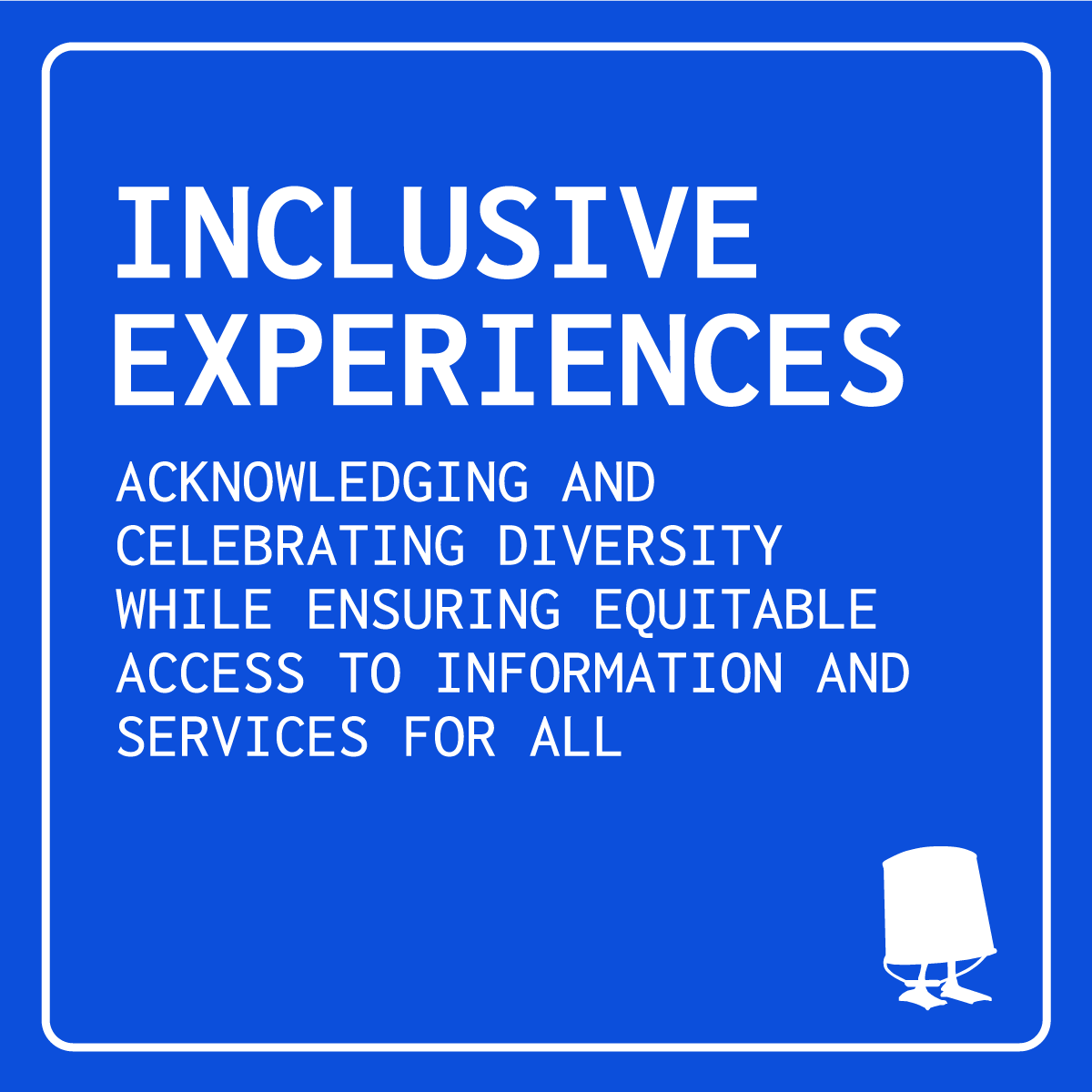Inclusive experiences
Embracing diversity: Building an inclusive website experience
Inclusivity in web design goes beyond accessibility; it encompasses a broader spectrum of considerations aimed at welcoming and accommodating users from diverse backgrounds, perspectives, and experiences. As the internet becomes increasingly integral to daily life, creating a digital space that respects and celebrates diversity is not just a goal but a necessity.
Understanding inclusivity
Inclusivity in web design revolves around the idea of creating a digital environment where every user feels valued, respected, and represented. It involves acknowledging and accommodating differences in culture, language, socio-economic status, age, gender identity, sexual orientation, and more. An inclusive website is one that acknowledges and celebrates the diversity of its users while ensuring equitable access to information and services for all.
Inclusion addresses a broad range of issues including:
access to (and quality of) hardware, software, and Internet connectivity
computer literacy and skills
economic situation
education
geographic location
language (non-English or low-English users)
age or disability
Key considerations for inclusivity
Clear language: Use everyday words, don’t use jargon. Write in plain text.
Reading level: For non-English or low-English users, it is generally advised to write at a sixth-grade level. Microsoft Word can be used to check readability levels. Choose short, common words (1-2 syllables), and make sure sentences are also short (about 10-15 words in length) and written in the active voice and positive tone. Paragraphs should be short and should present one important issue, in 2-5 sentences. Don’t use abbreviations or acronyms. Avoid ‘etc’, ‘ie’, ‘eg’. Break up topics so that only 2-3 are presented per page.
Multilingual support: Consider providing content in multiple languages to cater to users who are more comfortable consuming content in languages other than the default language. Language should not be a barrier to accessing information or services.
Cultural sensitivity: Be mindful of cultural differences and avoid using language, symbols, or imagery that could be offensive or alienating to certain cultural groups. Cultural sensitivity fosters a sense of belonging and respect among diverse users.
Representation in visuals: Ensure that the images, illustrations, and graphics used on the website are inclusive and representative of diverse identities, backgrounds, and experiences. This helps users see themselves reflected in the content and feel included.
Visual explanations: Visuals can make text more interesting or relevant, or help explain a point. If using graphics, make sure they are relevant and clear, and culturally appropriate. Don’t use visual puns. Don’t use icons that could be offensive in other cultures.
Gender-inclusive design: Avoid assumptions about gender identity and design forms, language, and interactions in a way that is gender-neutral. Creating a gender-inclusive environment promotes respect and dignity for all users.
Accessible content formats: Offer content in various formats, such as text, audio, and video, to accommodate different learning styles and preferences. Providing multiple formats ensures that users can access information in the way that best suits their needs.
Diverse perspectives in design: Include diverse voices and perspectives in the design process to ensure that the website reflects the experiences and preferences of a wide range of users. Collaborating with diverse stakeholders can lead to more inclusive design decisions.
Conclusion
Building an inclusive website is a journey that requires ongoing commitment, empathy, and open-mindedness. By considering the diverse needs, preferences, and experiences of users, website designers can create digital spaces that foster belonging, respect, and empowerment for all. Inclusivity is not just a checkbox to tick off but a guiding principle that should inform every aspect of web design and development. Together, let's embrace diversity and create a digital world where everyone feels seen, heard, and valued.
By considering the diverse needs, preferences, and experiences of users, we can create digital spaces that foster belonging, respect, and empowerment for all.
